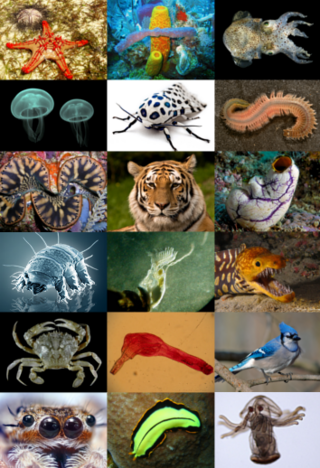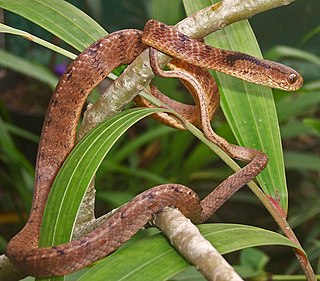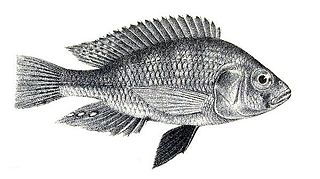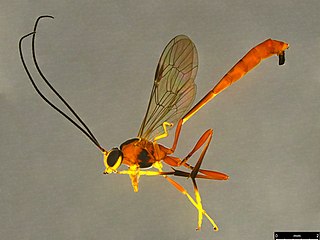
Lake Victoria is one of the African Great Lakes. With a surface area of approximately 59,947 km2 (23,146 sq mi), Lake Victoria is Africa's largest lake by area, the world's largest tropical lake, and the world's second-largest fresh water lake by surface area after Lake Superior in North America. In terms of volume, Lake Victoria is the world's ninth-largest continental lake, containing about 2,424 km3 (1.965×109 acre⋅ft) of water. Lake Victoria occupies a shallow depression in Africa. The lake has an average depth of 40 m (130 ft) and a maximum depth of 80–84 m (262–276 ft). Its catchment area covers 169,858 km2 (65,583 sq mi). The lake has a shoreline of 7,142 km (4,438 mi) when digitized at the 1:25,000 level, with islands constituting 3.7% of this length.

A parakeet is any one of many small to medium-sized species of parrot, in multiple genera, that generally has long tail feathers.

Chinchillas are either of two species of crepuscular rodents of the parvorder Caviomorpha. They are slightly larger and more robust than ground squirrels, and are native to the Andes mountains in South America. They live in colonies called "herds" at high elevations up to 4,270 m (14,000 ft). Historically, chinchillas lived in an area that included parts of Bolivia, Peru, Argentina, and Chile, but today, colonies in the wild are known only in Chile. Along with their relatives, viscachas, they make up the family Chinchillidae. They are also related to the chinchilla rat.

Labeo is a genus of carps in the family Cyprinidae. They are found in freshwater habitats in the tropics and subtropics of Africa and Asia.

Animals are multicellular, eukaryotic organisms in the biological kingdom Animalia. With few exceptions, animals consume organic material, breathe oxygen, are able to move, can reproduce sexually, and go through an ontogenetic stage in which their body consists of a hollow sphere of cells, the blastula, during embryonic development. Over 1.5 million living animal species have been described—of which around 1 million are insects—but it has been estimated there are over 7 million animal species in total. Animals range in length from 8.5 micrometres (0.00033 in) to 33.6 metres (110 ft). They have complex interactions with each other and their environments, forming intricate food webs. The scientific study of animals is known as zoology.
The ningu is a species of ray-finned fish in the family Cyprinidae. It is found in the Lake Victoria basin in Burundi, Kenya, Tanzania, and Uganda. Its natural habitats are rivers, swamps, freshwater lakes, freshwater marshes, and inland deltas. It is threatened by a loss of habitat due to pollution, siltation and drainage as agriculture expands in the Lake Victoria basin, by overfishing on their breeding migrations and by introduced alien fish.

Pareas is a genus of Asian snakes in the family Pareidae. All species in the genus Pareas are harmless to humans.

Haplochromis victorianus is a species of cichlid endemic to Lake Victoria though it may now be extinct. This species reaches a length of 16.6 centimetres (6.5 in) SL.
Saint Gaudiosus was the Bishop of Tarazona (Turiasso), Spain.

An endangered species is a species that is very likely to become extinct in the near future, either worldwide or in a particular political jurisdiction. Endangered species may be at risk due to factors such as habitat loss, poaching and invasive species. The International Union for Conservation of Nature (IUCN) Red List lists the global conservation status of many species, and various other agencies assess the status of species within particular areas. Many nations have laws that protect conservation-reliant species which, for example, forbid hunting, restrict land development, or create protected areas. Some endangered species are the target of extensive conservation efforts such as captive breeding and habitat restoration.

Xenopus victorianus, the Lake Victoria clawed frog or Mwanza frog, is a species of frogs in the family Pipidae. It is found in aquatic habitats in eastern Democratic Republic of Congo and South Sudan, Uganda, Kenya, Rwanda, Burundi, and Tanzania. However, because of confusion with Xenopus laevis, the exact distribution is quite unclear.
iNaturalist is a social network of naturalists, citizen scientists, and biologists built on the concept of mapping and sharing observations of biodiversity across the globe. iNaturalist may be accessed via its website or from its mobile applications. As of 21 September 2022, iNaturalist users had contributed approximately 115,651,000 observations of plants, animals, fungi, and other organisms worldwide, and around 245,700 users were active in the previous 30 days.

Aquaculture Research and Development Centre, Kajjansi (ARDC), is a national centre responsible for aquaculture research and development in Uganda. It is a branch of the National Fisheries Resources Institute (NAFIRRI).
Iridomyrmex victorianus is a species of ant in the genus Iridomyrmex. Described by Forel in 1902, the species distributed to the east coast in Australia. The species usually takes an opportunity of using other nests constructed by larger ants, usually abandoned, and some were found in a bull ant nest.
Habronyx minutus is a species of small parasitic wasp in the subfamily Anomaloninae of family Ichneumonidae. It has a length of 5.5 to 8 millimetres. The species was described by D. F. Ward in 2015, and the holotype was collected in December 1980 at Pelorus Bridge.
Zaniolepis frenata, the shortspine combfish, is a species of ray-finned fish belonging to the family Zaniolepididae.The species occurs in the eastern Pacific Ocean.

Habronyx is a genus of parasitoid wasps belonging to the family Ichneumonidae. The species of this genus are found in Europe, Australia, and North and South America.
Habronyx fulvipes is a species of parasitic ichneumon wasp. It was renamed by Townes, Momoi and Townes in 1965 ; prior to that the species had been named Habronyx chinensis, chinensis meaning "China", in 1955 by Japanese entomologist Toichi Uchida. The holotype and allotype were collected by R. Mell. The species was first named Exochilum Chinense by Morley in 1913.











